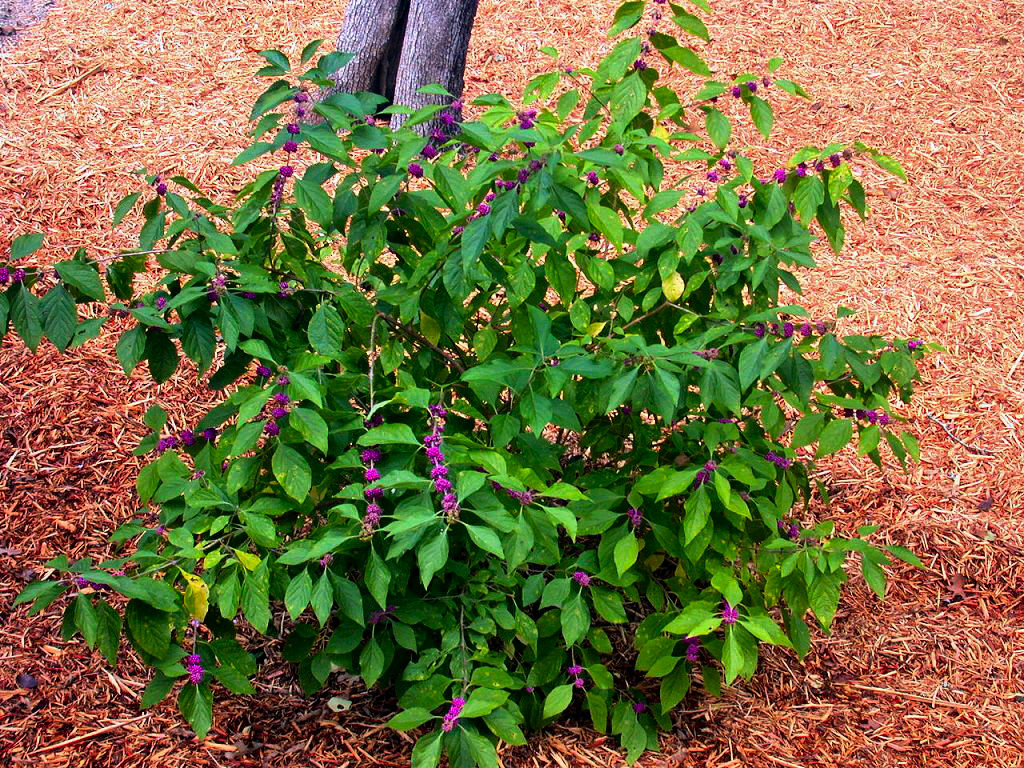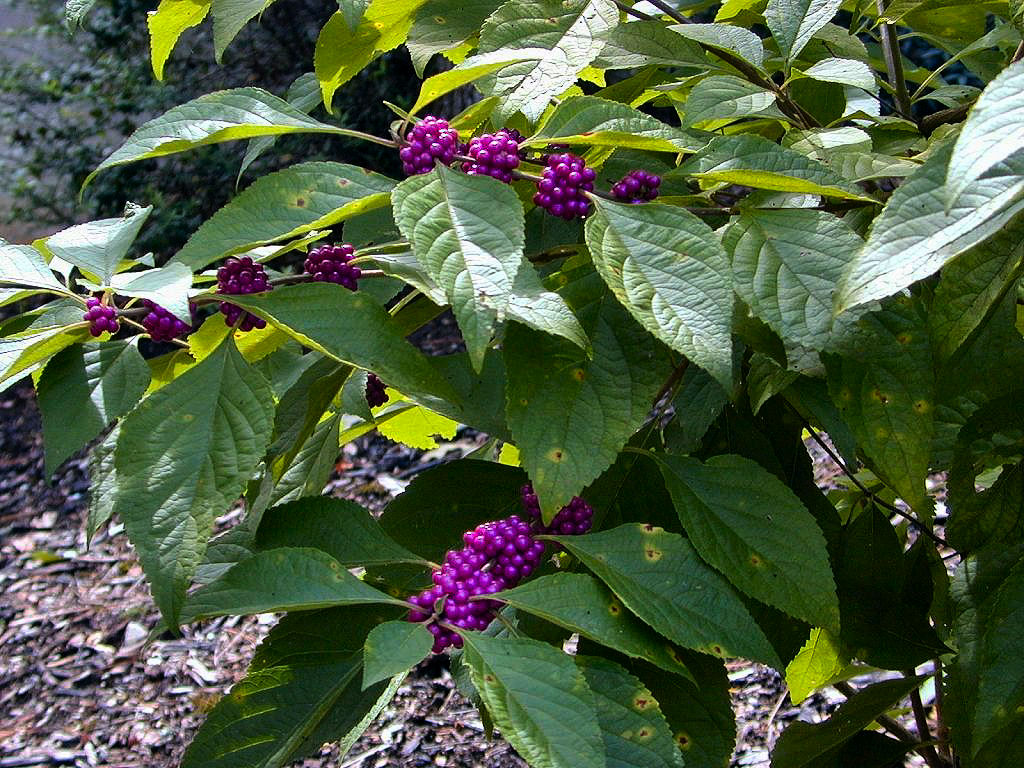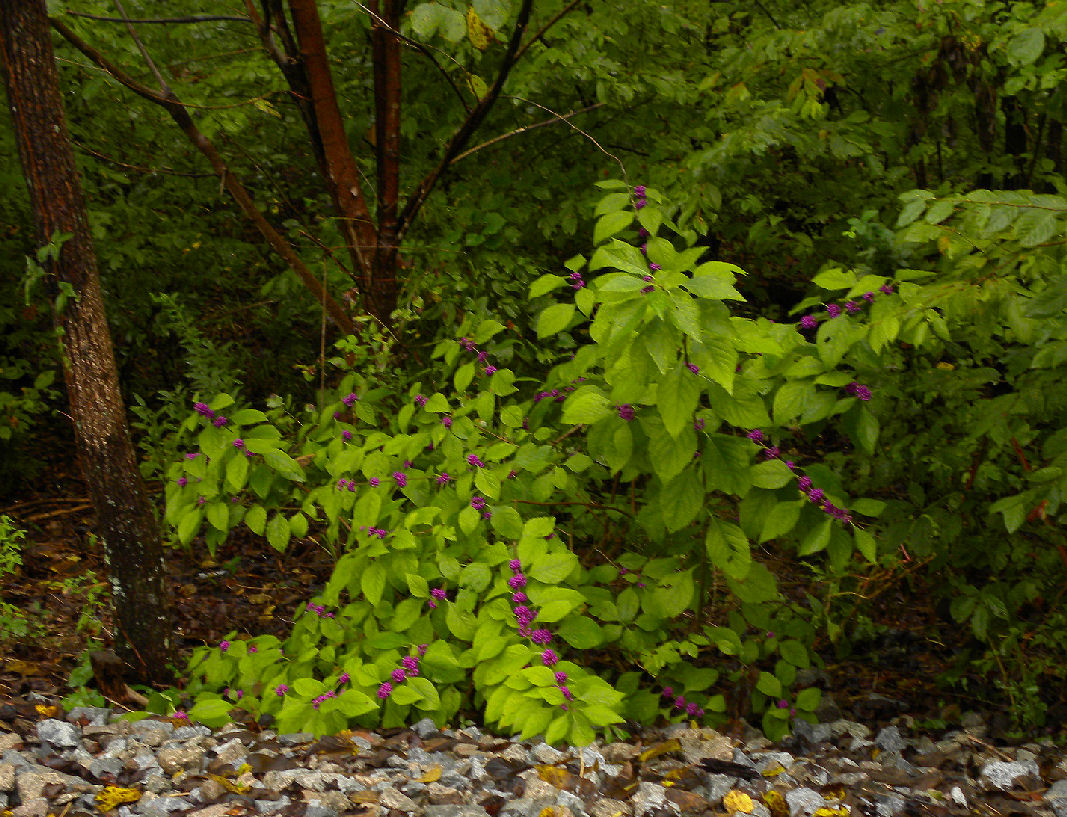French Mulberry
Here is one in the side lot which doesn't get watered. It wilted after a long drought but survived. The crested irises near it also dried out but lived.
The following information was found on the Internet: French Mulberry roots, leaves and branches were used by the Alabama, Choctaw, Creek, Koasati, Seminole and other Native American tribes for medicinal purposes, including in sweat baths to treat both malarial fevers and rheumatism. The boiled plant parts were poured into a big pan that was placed near the patient inside a sweathouse. A similar decoction of the roots was used to treat dizziness and stomach aches. The roots were boiled with roots from Rubus spp. to make an infusion to treat dysentery. The roots and berries were boiled and drunk to treat colic. The bark from the stems and roots was used to treat itchy skin.
In case there is any question about whether deer eat French Mulberries, here's a buck |



